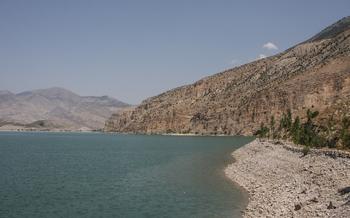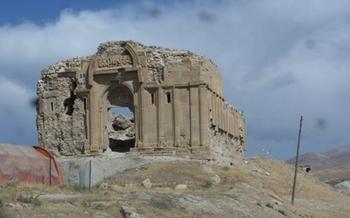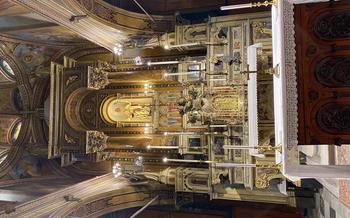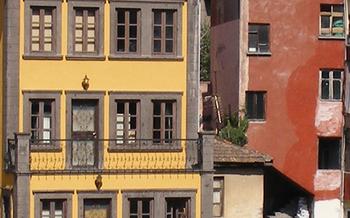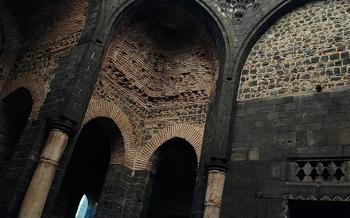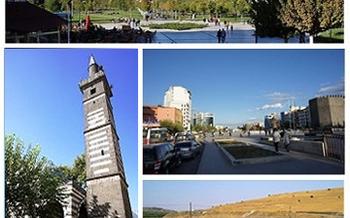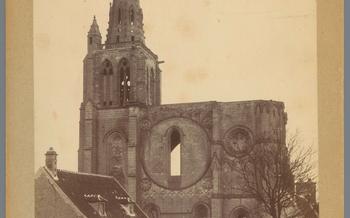
Haho Monastery
- Historical Significance
- Architectural Marvel
- Breathtaking Views
- Monastery Complex
- Religious Significance
- Cultural Heritage
- Pilgrimage and Tourism
- Monastery's Restoration
- Local Delicacies
- Festivals and Events
- Accommodation and Amenities
- Best Time to Visit
- Photography Enthusiasts:
- Nearby Attractions
- Insider Tip: Uncover the Hidden Treasures of the Monastery's Library
Historical Significance
The Haho Monastery, also known as the Hah Monastery, holds immense historical and religious significance in the region. Founded in the 10th century, it is one of the oldest and most prominent monasteries in Turkey. Built by Georgian monks, the monastery served as a crucial center for the spread of Christianity in the region and beyond. Over the centuries, it has undergone various renovations and expansions, reflecting the diverse cultural influences that have shaped its history. The monastery's architecture, with its unique blend of Byzantine and Georgian styles, stands as a testament to the rich cultural heritage of the region. Its well-preserved state makes it an invaluable site for studying the history and evolution of monasticism in Turkey.
Architectural Marvel
The Haho Monastery stands as a testament to the architectural prowess of its builders. Constructed using locally sourced stone, the monastery boasts intricate carvings and impressive masonry that showcase the skill and dedication of the craftsmen who worked on its creation. The exterior walls are adorned with beautiful reliefs and sculptures, depicting scenes from the Bible and the lives of saints. Inside the monastery, visitors are greeted by a series of stunning frescoes that cover the walls and ceilings. These vibrant and well-preserved paintings depict religious scenes, historical events, and portraits of saints, offering a glimpse into the rich artistic heritage of the region. The monastery's architecture is a harmonious blend of Byzantine and Armenian styles, reflecting the cultural influences that have shaped the region's history. The combination of stonework, carvings, and frescoes creates a breathtaking visual experience that leaves visitors in awe.
Breathtaking Views
The Haho Monastery offers breathtaking panoramic views that will leave you in awe. Perched atop a hill, the monastery provides a unique vantage point from which to admire the stunning landscapes of Erzurum. Snow-capped mountains, lush forests, and serene valleys stretch out before you, creating a picturesque tableau that will take your breath away.
As you gaze out from the monastery's windows or terraces, you'll be captivated by the beauty of the surrounding nature. The snow-capped peaks of the Erzurum Mountains glisten in the sunlight, while the lush forests provide a refreshing contrast. The serene valleys, dotted with quaint villages and meandering rivers, invite you to explore and discover their hidden charms.
Whether you're a nature lover, a photographer, or simply someone who appreciates breathtaking views, the Haho Monastery is a must-visit destination. Take your time to soak in the scenery, capture some Insta-worthy shots, and create memories that will last a lifetime.
Monastery Complex
The Haho Monastery is more than just a church; it is a complex of several structures that serve various purposes. The main building is the church itself, which is a beautiful example of Armenian architecture, with its intricate carvings, colorful frescoes, and impressive dome. Surrounding the church are several chapels, each dedicated to a different saint or purpose. These chapels are smaller in size but equally impressive in their design and craftsmanship.
In addition to the church and chapels, the monastery complex also includes living quarters for the monks, a refectory, a library, and a scriptorium. These buildings are arranged around a central courtyard, creating a sense of community and unity among the residents. The living quarters are simple and modest, reflecting the monastic life of austerity and devotion.
The refectory is where the monks would gather for meals, and it is a beautifully decorated space with intricate carvings and frescoes depicting scenes from the Bible. The library contains a collection of ancient manuscripts and books, many of which are of great historical and religious significance. The scriptorium is where the monks would copy and illuminate manuscripts, and it is a testament to their dedication to learning and scholarship.
The Haho Monastery complex is a testament to the architectural prowess and religious devotion of the Armenian people. It is a place of great beauty and historical significance, and it is well worth a visit for anyone interested in Armenian culture and history.
Religious Significance
The Haho Monastery holds immense religious significance as a place of worship and pilgrimage for Christians from around the world. It is one of the oldest Christian monasteries in the region, dating back to the 10th century, and has played a crucial role in the spread of Christianity in Erzurum and the surrounding areas. The monastery was founded by Saint Hripsime, a nun who fled Armenia to escape religious persecution. She settled in the Haho Valley and established the monastery, which quickly became a center of religious devotion and learning. Over the centuries, the monastery has attracted pilgrims from far and wide who come to pay homage to Saint Hripsime and seek spiritual guidance. The monastery's unique location, nestled among the breathtaking landscapes of the Haho Valley, further enhances its spiritual atmosphere, making it a place of tranquility and contemplation.
Cultural Heritage
The Haho Monastery stands as a testament to the rich cultural heritage of the region. It has played a pivotal role in preserving and promoting local traditions, crafts, music, and art. Within the monastery's walls, visitors can discover a vibrant tapestry of cultural expression. Local artisans showcase their skills in intricate embroidery, weaving, and woodworking, creating beautiful souvenirs that reflect the region's unique identity. The monastery also hosts regular concerts and performances, where visitors can immerse themselves in the enchanting melodies and rhythms of traditional Turkish music. These events offer a glimpse into the vibrant cultural heritage that thrives within the monastery and the surrounding communities.
Pilgrimage and Tourism
The Haho Monastery, with its rich history and religious significance, has become a popular pilgrimage site for both Christians and non-Christians alike. Christian pilgrims from around the world come to visit the monastery, paying homage to its spiritual importance and seeking a deeper connection with their faith. Non-Christian visitors are also drawn to the monastery's unique architecture, breathtaking views, and the opportunity to learn about the region's diverse cultural heritage.
To cater to the growing number of pilgrims and tourists, the monastery has made efforts to accommodate their needs and provide a memorable experience. Guided tours are available, led by knowledgeable guides who share insights into the monastery's history, architecture, and religious significance. Visitors can also attend religious services and participate in special events held throughout the year.
The monastery's commitment to welcoming visitors has helped to foster a sense of community and understanding among people of different faiths. It has also contributed to the region's tourism industry, providing employment opportunities and promoting cultural exchange.
Monastery's Restoration
The Haho Monastery has undergone extensive restoration efforts in recent years to preserve its historical integrity and architectural beauty. The restoration process has been a delicate balance between maintaining the monastery's original character and incorporating modern techniques to ensure its stability and longevity.
One of the main challenges faced during the restoration was the deterioration of the stonework due to centuries of exposure to harsh weather conditions. Skilled craftsmen meticulously repaired and replaced damaged stones, ensuring that the monastery's distinctive facade remained intact.
Another challenge was preserving the intricate carvings and frescoes that adorn the monastery's interior. Restoration experts employed specialized techniques to clean and restore these delicate artworks, bringing back their vibrant colors and intricate details.
The restoration project has been a labor of love and dedication, involving experts from various fields, including architects, historians, and conservators. Their efforts have not only preserved the monastery's physical structure but also its cultural and spiritual significance for future generations.
Local Delicacies
A visit to the Haho Monastery offers an opportunity to savor the flavors of traditional Turkish cuisine. The region is renowned for its hearty dishes that showcase fresh, local ingredients. Visitors can indulge in mouthwatering kebabs, succulent grilled meats, and aromatic stews, often prepared using regional herbs and spices.
For a truly authentic experience, try the "Erzurum Cağ Kebabı," a local specialty consisting of thinly sliced lamb meat grilled on skewers over an open fire. Another must-try is "Çiğ Köfte," a delicious dish made from bulgur, minced meat, and spices, served with fresh vegetables.
For a sweet treat, sample the delectable "Kadayıf," a crispy filo pastry filled with chopped walnuts and sweetened with syrup. Alternatively, try the "Erzurum Dondurması," a unique ice cream known for its stretchy texture and rich flavor.
To fully immerse yourself in the local culinary scene, visit the nearby village of Tortum, famous for its trout farms. Here, you can savor freshly caught trout prepared in various traditional styles, offering a delightful taste of the region's aquatic treasures.
Festivals and Events
The Haho Monastery and its surroundings come alive with vibrant festivals and events throughout the year, offering a unique blend of religious, cultural, and traditional experiences. One of the most significant events is the annual Haho Monastery Festival, held in the summer months. This festival attracts thousands of pilgrims and tourists who gather to celebrate the monastery's rich history and religious significance. The festival features traditional music performances, folk dancing, and a lively bazaar showcasing local crafts, souvenirs, and culinary delights.
Other notable events include the Feast of the Assumption, celebrated on August 15th, and the Feast of the Nativity of Mary, celebrated on September 8th. These religious festivals draw large crowds and offer a glimpse into the deep-rooted Christian traditions of the region. Visitors can witness solemn processions, special prayers, and festive gatherings that highlight the monastery's importance as a place of worship and pilgrimage.
Accommodation and Amenities
When planning your visit to the Haho Monastery, you'll find a range of accommodation options to suit different preferences and budgets. Several hotels and guesthouses are located in the nearby town, offering comfortable stays with modern amenities. For a more immersive experience, consider opting for a traditional guesthouse or a local homestay. These accommodations provide a unique opportunity to connect with the local culture and enjoy authentic Turkish hospitality.
In addition to accommodation, the area surrounding the monastery offers a range of amenities to enhance your visit. Transportation options, including buses and taxis, are readily available, making it easy to get around the region. Visitors can also find shops selling souvenirs, local handicrafts, and essential supplies. For those seeking a deeper cultural experience, consider booking a guided tour with a knowledgeable local guide. These tours offer insights into the monastery's history, architecture, and religious significance, ensuring a more enriching and informative visit.
Best Time to Visit
The best time to visit the Haho Monastery is during the summer months, from June to September, when the weather is warm and pleasant, allowing visitors to fully appreciate the monastery's stunning architecture and surrounding landscapes. During this time, the skies are clear, and the air is crisp, providing excellent visibility for capturing breathtaking photographs.
However, the monastery is also worth visiting during the winter, from December to February, when the snow-capped mountains and valleys create a picturesque winter wonderland. While the weather may be colder, the monastery takes on a unique charm during this time, offering a serene and tranquil atmosphere.
It's important to note that the monastery may experience occasional closures due to weather conditions, especially during the winter months. Therefore, it's advisable to check the monastery's website or contact local authorities for up-to-date information before planning your visit.
Photography Enthusiasts:
The Haho Monastery is a visual masterpiece, making it an ideal destination for photography enthusiasts. The intricate stone carvings, beautifully preserved frescoes, and stunning panoramic views offer endless opportunities to capture captivating shots. To make the most of your photography experience, consider visiting the monastery during the golden hour, just before sunset, when the warm light casts a magical glow on the architecture. Experiment with different angles to capture the monastery's grandeur, focusing on the intricate details and the surrounding landscapes. The monastery's serene ambiance and picturesque surroundings provide a perfect backdrop for creating memorable photographs that will transport you back to this historical gem.
Nearby Attractions
The Haho Monastery's captivating charm extends beyond its walls, inviting visitors to explore the region's wealth of natural wonders and cultural treasures. Embark on a scenic hike through the nearby Tortum Valley, renowned for its breathtaking vistas, cascading waterfalls, and lush forests. Immerse yourself in the region's rich history at the Erzurum Archaeology Museum, which houses an impressive collection of artifacts from various civilizations that once called this land home. For a taste of local culture, venture into the heart of Erzurum city, where you can explore vibrant bazaars, savor delectable Turkish cuisine, and witness the city's lively atmosphere.
Insider Tip: Uncover the Hidden Treasures of the Monastery's Library
For those with a thirst for knowledge and a passion for history, the Haho Monastery boasts a hidden gem—its ancient library. Step inside this treasure-trove of wisdom, where rows upon rows of dusty manuscripts and rare books await your exploration. Delve into the monastery's rich collection of religious texts, historical chronicles, and scientific treatises, offering a glimpse into the intellectual and spiritual pursuits of past generations. Uncover forgotten stories, unravel ancient mysteries, and immerse yourself in the monastery's legacy of learning and scholarship.
